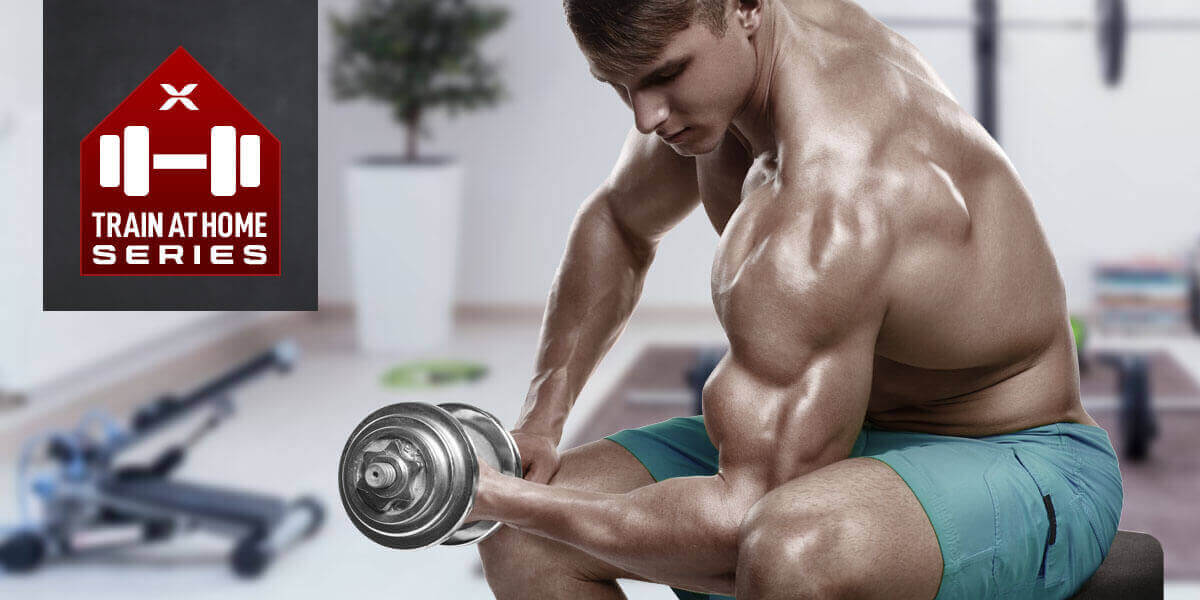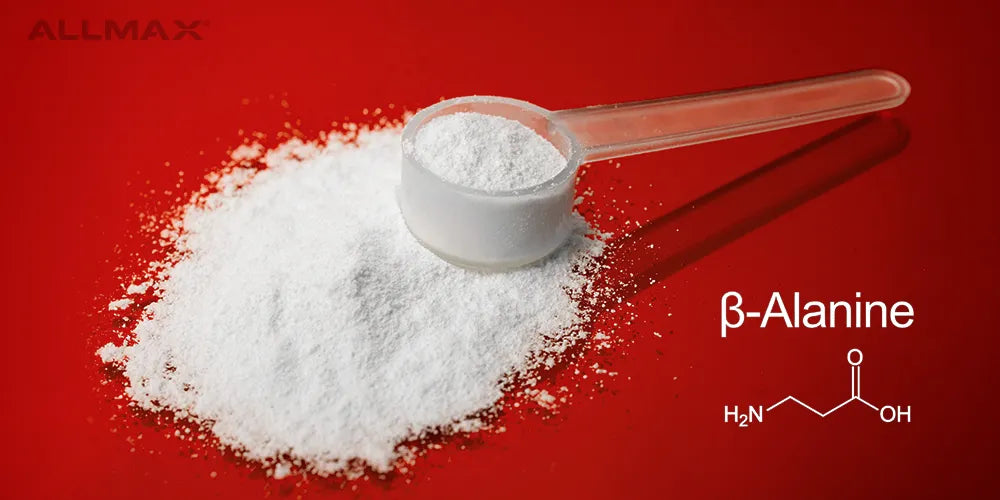All-Dumbbell/Barbell Workout Plan for Fast Results
Most lifters are spoilt for choice when it comes to selecting a program that aligns with their specific training goals and preferences. While having choice and a broad range of training options can be great, it also presents the dilemma of sorting through the best of these to pick one that most closely accommodates our exact training objectives. An ideal way to solve this problem is the try each plan, observe closely how your body responds, take extensive notes, then run with whichever best addresses the key areas of importance we are seeking to leverage from.
Monday
Morning: Cardio/Abs
- 45 minutes moderate intensity steady state: treadmill, stepper or stationary cycle (Training Heart Rate: 100-110 BPM)
- Floor Crunches SS with Hanging Leg Raises: 4 sets of 20 reps per set
Evening: Full Body Workout 1
- Deadlifts: 3 sets of 12 reps per set
- Pullups: 3 sets of as many reps as possible per set
- Alternating Incline DB Curls SS with One-Arm Triceps Kickbacks: 4 sets of 12 reps per set (per side)
- Barbell Shrugs: 3 sets of 10 reps per set
- Bench Presses SS with Incline DB Presses: 3 sets of 12 reps per set
- Arnold DB Presses SS with Lateral Raises: 3 sets of 15 reps per set
- Dumbbell Squat-Presses: 3 sets of 15 reps per set
- Barbell Walking Lunges SS with DB Split Squats: 3 sets of 12 reps per set (per side)
- One-Legged DB Standing Calf Raises (using step): 3 sets of 20 reps per set (per side)
Tuesday
Rest DayWednesday
Morning: Cardio:
- 30 minutes moderate intensity steady state: Treadmill, Stepper or Stationary Cycle (Training Heart Rate: 100-110 BPM).
Evening: Full Body Workout 2
- Close-Grip Bench Presses: 3 sets of 12 reps per set
- DB Bench Presses TS with DB Incline Flyes/Bench Dips: 3 sets of 12 reps per set
- DB Front Raises: 3 sets of 15 reps per set
- Bent Lateral Raises: 3 sets of 12 reps per set
- Bent BB Rows SS with Close-Grip Pulldowns: 3 sets of 12 reps per set.
- One-Arm DB Rows: 3 sets of 15 reps per set
- BB Curls: 3 sets of 12 reps per set
- Lying BB Triceps Extensions: 3 sets of 12 reps per set
- Wide Stance BB Squats SS with Leg Extensions: 3 sets of 15 reps per set
- Standing Alternating DB Lunges SS with One-Legged DB Standing Calf Raises: 3 sets of 15 reps per set (per side)
Thursday
Morning: Cardio/Abs
- 45 minutes moderate intensity steady state: Treadmill, Stepper or Stationary Cycle (Training Heart Rate: 100-110 BPM).
- Bicycle Crunches SS with Knee Raises from Bench: 4 sets of 20 reps per set
Friday
Evening: Full Body Workout 3
- Bodyweight Medium-Stance Squats: 3 sets of 50 reps per set
- Leg Curls SS with Romanian Deadlifts: 3 sets of 15 reps per set
- One-Legged DB Standing Calf Raises: 3 sets of 30 reps per set
- Reverse-Grip Pulldowns: 3 sets of 12 reps per set
- Sumo Deadlifts SS with DB Rows: 3 sets of 12 reps per set
- Barbell Shoulder Presses: 3 sets of 10 reps per set
- Lateral Raises: 3 sets of 15 reps per set
- Incline DB Crush Presses: 3 sets of 12 reps per set
- Flat Bench Flyes: 3 sets of 15 reps per set
- Triceps Press-downs SS with DB Hammer Curls: 3 sets of 12 reps per set
Saturday
Morning: Cardio:
- 25 minutes of HIIT, alternating between 40 seconds moderate intensity and 20 seconds super-high intensity (maintaining a maximum heart rate of between 110-120 BPM during moderate phase and 130-140 BPM during high intensity phase: Treadmill, Stepper, or Stationary Cycle
Evening: Full Body Active-Recovery Workout
-Note: use light weights and avoid muscle failure on all sets
- Bodyweight Walking Lunges TS with Bodyweight Wide-Stance Squats: 3 sets of 25 reps per set (per side for lunges)
- Box Jumps: 3 sets of 25 reps per set
- Close-Grip Push-Ups SS with Wide-Grip Push-Ups: 3 sets of as many reps as possible per set (stop just shy of failure)
- Incline DB Flyes: 3 sets of 25 reps per set
- DB Deadlifts TS with Reverse-Grip BB rows/Close-Grip Pulldowns: 3 sets of 25 reps per set
- DB Shoulder Presses: 3 sets of 25 reps per set
- Ben Lateral Raises: 3 sets of 25 reps per set
- Standing Alternating DB Curls: 3 sets of 25 reps per set
- DB Triceps Kickbacks: 3 sets of 25 reps per set
Sunday
Morning: Cardio:
- 25 minutes of HIIT, alternating between 40 seconds moderate intensity and 20 seconds super-high intensity (maintaining a maximum heart rate of between 110-120 BPM during moderate phase and 130-140 BPM during high intensity phase: Treadmill, Stepper, or Stationary Cycle

Top Five Supplements for Lean Mass Gains
Due to its emphasis on high volume and high intensity, full-body training alone is an excellent way to keep the muscles in a high state protein synthesis. That being said, the program to follow requires the best possible recovery (a definitely USP of full-body training) so that each session can be accomplished with the utmost intensity. Though the program to follow has built-in recovery days to maximize progress, complete recovery can only be achieved with the best nutrition taken at the right times. Therefore, only the highest quality supplements (those best suited to increasing muscle anabolism by mitigating long-term muscle damage, increasing muscle protein synthesis and expediting recovery) should be used to maximize program effectiveness. Here are five of the best.
Much research supports the benefits of protein timing in potentiating post-training muscle protein synthesis.9, 12, 13, 14, 24, 25 For this reason alone, the standard-bearer in Whey Isolate protein, ISOFLEX, remains one of the most effective ways to translate reps into results. Whey Isolate remains the gold standard by which all other protein supplements are measured. In contrast to other proteins, isolate is 90%+ protein by weight and has been processed to remove a much of its lactose and fat. This makes it both better assimilated and optimal for constructing muscle mass following intensive training. A major key to building an impressive degree of muscle is to achieve an optimal macronutrient balance. However, boosting protein intake can be difficult when weighing-up the quality of most popular high protein foods, the time we must take to prepare and consume the ideal amount of protein for muscle repair, the unpalatable taste of certain foods, the financial burden many lean protein sources place on the consumer, and the inconvenience of transporting several daily protein-rich meals and ingesting them at regular intervals. Which is where Whey Isolate is perfect. A quality Whey, like ISOFLEX, makes protein consumption a more enjoyable and time-efficient process while providing a highly-bioavailable and great tasting muscle-building protein that consistently outperforms whole food proteins in terms of Biological Value (BV) and Net Protein Utilization (NPU).26 Using an advanced extraction process to provide a full spectrum of bioactive protein isolate fractions and a maximum amount of useable protein per serving, ISOFLEX is of the highest bioavailability and rapidly assimilated and absorbed. It is designed, upon ingestion, to be rapidly shuttled to amino-acid hungry muscles post-training, to advance protein synthesis faster than other such products.
ALLMAX’s patented brand of Creatine Monohydrate is as fast-acting and as pure as it gets (Monohydrate, more so than any other standalone product, has been extensively researched and proven to build muscle and improve strength). Creatine is an endogenous amino acid that’s made up of the simpler aminos’ arginine, glycine and methionine. Found naturally in meat, it serves fundamentally as a backup donor for the recycling of ATP (muscular contraction’s main energy currency) while also optimizing energy output by neutralizing intracellular acid build-up (a process which stifles muscular endurance).15 By supplementing with Creatine, weight training is greatly optimized. This is achieved as a result of a higher than normal level of muscle contractibility and endurance due to a greater intensity output. In addition, creatine also increases protein synthesis, which further expedites muscle gains.15 Creatine also massively increases the water content of muscle cells, a super-hydrating, cell-volumizing effect that not only makes the muscles look bigger but also has a beneficial impact of nitrogen levels within muscle tissue and the expression of certain genes that influence protein and glycogen synthesis regulation, along with satellite cell proliferation and differentiation, DNA replication and repair, RNA transcription control and cell survival.15, 16
The BCAAs have become one of the most trusted go-to supplements for anabolic activation and ongoing lean mass gains. This is due in large part to the influence of Leucine, which signals the activation of mammalian target of rapamycin (mTOR), an enzyme of critical importance to muscle protein synthesis.5, 17 With its powerful 9:6:5 ratio of BCAAs’ Leucine, Valine, and Isoleucine, AMINOCORE provides an unrivalled 8.18g of BCAAs, which, when taken pre- and intra-workout, keeps protein synthesis high and muscle gains on track (due, in large part to the aforementioned L-Leucine and extremely high bioavailability).18 In addition to its ease of assimilation and range of great flavors, AMINOCORE has become a firm favorite for those wanting to preserve valuable muscle tissue (by attenuating the rate of muscle protein breakdown) when committing to advanced training protocols such as the full-body plan below.
Conditionally essential and the most prolific amino acid in muscle tissue, Glutamine is a well-rounded muscle-builder that doubles as an important way to boost immunity and general health. Muscle glutamine levels greatly decline whenever muscle is subjected to stress. Here, Glutamine is taken from muscle tissue to be used for processes more critical to survival, such as immune function. As a result, muscle goes from being anabolic to catabolic, a process which naturally interferes with recovery and growth. As a consequence, a gradual depletion in muscle Glutamine levels may result in the steady depletion of muscle tissue. This is something all bodybuilders must avoid as the physiological demands of hard training may supersede the natural replenishment of Glutamine. When taken after a workout, Glutamine stimulates the production of glycogen synthase, an enzyme that is required to increase the storage of glycogen in the muscles and liver. Because of this, Glutamine can also be used to boost recovery. In addition, Glutamine can also be used to decrease inflammation and muscle damage, both of which may also lead to improper recovery.6 By taking ALLMAX GLUTAMINE you can be sure to receive only the purest and most bioavailable form of this important muscle amino

The smallest of nutritional deficiencies can result in an extreme decline in strength, recovery, health and, ultimately, muscle gains. By taking a daily nine-pill serving of VITASTACK you’ll receive every essential nutrient needed to boost all parameters of health, wellbeing and muscle growth. Of particular importance to all athletes and gym trainees is the proper ratio of vitamins and minerals. In fact, for those whose active schedules require getting the right balance of each of the 13 essential vitamins and 21 essential minerals (the key micronutrients), supplementation could be said to be critical to long-term success. Each of the essential vitamins and minerals (along with numerous other assorted micros) plays a valuable and specific role in improving the growth and function of all of our cells. Without the right ratio of each of these (difficult to achieve on whole foods alone), we are likely to experience low energy and poor tissue healing along with stifled performances in the gym. VITASTACK is doubly essential for active people; a requirement for complete nutrition among active populations being the very reason for its development in the first place. Those involved in hard training and exhaustive activity will inevitably experience a higher level of micronutrient depletion compared to the general population. Thus, the active among us require a greater intake of vitamins and minerals to assist with tissue recovery, healing, and growth. This is where VITASTACK becomes a valuable asset. With its pharmaceutical-grade levels of each of the valuable micronutrients and other health boosting compounds such as the omega 3s, it provides exactly what the body needs to complete, and benefit from, training regimens such as the one below.
Equipment
- Variously-weighted dumbbells (DB) and barbell (BB) with weight plates
- A basic weight bench with leg extension and pulldown/pressdown functions
- Stationary cycle, stepper, or treadmill
- Pullup bar
- Stability Ball
Intensity Methods
- Supersets (SS): complete a second set with a different movement immediately following the first set.
- Trisets (TS): complete a third set with a different movement immediately following the completion of two movements performed sequentially.

Key Benefits to Full-Body Training
References
- Bhasin, S. et al. (1996). The Effects of Supraphysiologic Doses of Testosterone on Muscle Size and Strength in Normal Men. N Engl J Med, July, 335:1-7
- Griggs, R. C. et al. (1985). Effect of Testosterone on Muscle Mass and Muscle Protein Synthesis. J Appl Physiol, 66 (1), 498-503 Jan
- Craig, B. W. et al. (19890. Effects of Progressive Resistance Training on Growth Hormone and Testosterone Levels in Young and Elderly Subjects. Mech Ageing Dev, 49 (2), 159-69 Aug
- Hansen, S. et al. (2001). The effect of short‐term strength training on human skeletal muscle: the importance of physiologically elevated hormone levels. Scandinavian Journal of Medicine & Science in Sports. Volume11, Issue6 December Pages 347-354
- Howatson, G. et al. (2012). Exercise-induced muscle damage is reduced in resistance-trained males by branched chain amino acids: a randomized, double-blind, placebo-controlled study. J Int Soc Sports Nutr. Jul 12;9:20
- Jain, P. et al. (1981). Evaluation of anti-inflammatory and analgesic properties of L-glutamine. Agents Actions. May;11(3):243-9.
- Kraemer, W. J. et al. (1992). Acute hormonal responses in elite junior weightlifters. Int J Sports Med. Feb;13(2):103-9.
- Mangine, G. T. et al. (2015). The effect of training volume and intensity on improvements in muscular strength and size in resistance-trained men. Physiol Rep. 2015 Aug; 3(8 (Published online 2015 Aug 13).
- Miller, S.L. et al. (2003). Independent and combined effects of amino acids and glucose after resistance exercise. Med Sci Sports Exerc. 35(3):449–55.
- Molsted, S. et al. (2014). Resistance training and testosterone levels in male patients with chronic kidney disease undergoing dialysis. BioMed research international
- Ochi, E. et al. (2018). Higher Training Frequency Is Important for Gaining Muscular Strength Under Volume-Matched Training. Front Physiol. 2018; 9: 744 (Published online 2018 Jul 2).
- Phillips, S.M. (2011). The science of muscle hypertrophy: making dietary protein count. Proc Nutr Soc. 70(1):100–3
- Phillips, S.M. et al. (2011). Dietary protein for athletes: from requirements to optimum adaptation. J Sports Sci. 29 (Suppl 1):S29–38. (post training protein)
- Phillips, S. M., et al. (1997). Mixed muscle protein synthesis and breakdown after resistance exercise in humans. Am J Physiol Endocrinol Metab 273: E99 –E107.
- Parise, G. et al. (2001). Effects of acute creatine monohydrate supplementation on leucine kinetics and mixed-muscle protein synthesis. J Appl Physiol. Sep;91(3):1041-7.
- Safdar, A. et al. (2008). Global and targeted gene expression and protein content in skeletal muscle of young men following short-term creatine monohydrate supplementation. Physiol Genomics. Jan 17;32(2):219-28.
- Shimomura, Y. et al. (2004). Exercise Promotes BCAA Catabolism: Effects of BCAA Supplementation on Skeletal Muscle during Exercise. Nutr. 134:1583S-1587S, June
- Shimomura, Y. et al. (2010). Branched-chain amino acid supplementation before squat exercise and delayed-onset muscle soreness. International Journal of Sport Nutrition, 20(3), 236.
- Saeterbakken, A. H. et al. (2017). The Effects of Bench Press Variations in Competitive Athletes on Muscle Activity and Performance. Journal of human kinetics, 57, 61–71
- Schoenfeld, B. J. et al. (2015). Influence of Resistance Training Frequency on Muscular Adaptations in Well-Trained Men. J Strength Cond Res. Jul;29(7):1821-9.
- Schoenfeld, B. J. et al. (2016). Effects of Resistance Training Frequency on Measures of Muscle Hypertrophy: A Systematic Review and Meta-Analysis. Sports Med. Nov;46(11):1689-1697.
- Schoenfeld, B. J. et al. (2017). Dose-response relationship between weekly resistance training volume and increases in muscle mass: A systematic review and meta-analysis. J Sports Sci. Jun;35(11):1073-1082.
- Thomas, M. H. (2016). Increasing Lean Mass and Strength: A Comparison of High Frequency Strength Training to Lower Frequency Strength Training. Int J Exerc Sci. 9(2): 159–167 (Published online 2016 Apr 1).
- Tipton, K.D. et al. (1999). Postexercise net protein synthesis in human muscle from orally administered amino acids. Am J Physiol. 276 (4 Pt 1): E628–34.
- Tipton, K.D. et al. (2009). Stimulation of muscle anabolism by resistance exercise and ingestion of leucine plus protein. Appl Physiol Nutr Metab. 34(2):151–61.
- Hoffman, J. R. et al. (2004). Protein – Which is Best? Journal of sports science & medicine, 3(3), 118–130.








